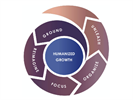Arun Sudhaman 10 Dec 2014 // 10:08AM GMT
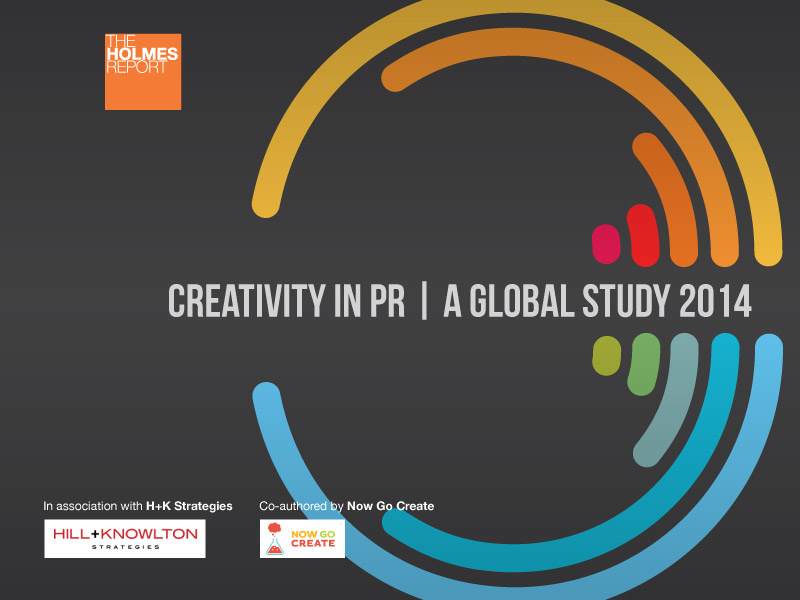
The 2014 edition of the Creativity in PR study reveals that the PR industry's increasing investment in creativity is starting to pay off, despite continued friction with clients over ideas and budgets.
The Creativity in PR report is co-authored by the Holmes Report and creativity experts Now Go Create, in partnership with H+K Strategies, based on a survey of 600 PR people from more than 35 countries across the world.
The third edition of the study again brings together respondents from agency and in-house, across a range of industries and sectors, in a bid to explore whether the PR industry is creative enough to successfully sway marketing budgets and develop game-changing ideas on a consistent basis.
They answered a variety of questions, focusing on attitudes towards creativity; tools and skills; opportunities and challenges; and suggestions and advice. A free PDF of the report can be viewed at the end of this story.
Encouraging signs
This year, the survey finds almost half of all respondents (49%) voicing the opinion that the quality of creativity in PR campaigns has improved over the past year, a significant increase on last year, when 61% disagreed with this contention.
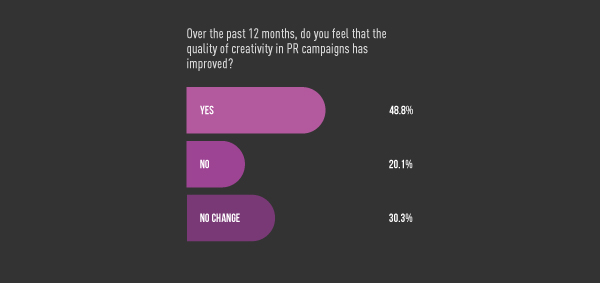
Meanwhile, the notion that PR agencies lack big ideas, receives less support this year (55%). In addition, the percentage of firms employing a creative director has grown by almost 10% since 2012 to 42% of respondents, reflecting the increasing formalisation of creativity within the agency model.
72% of respondents, furthermore, said they had a creative process in their business, another improvement on 2013. "In the past few years agencies have really upped their game in terms of process," says Now Go Create founder Claire Bridges, who co-authored the study. "Generally, the bigger the company the more likely that the creative process is well-defined. Without it creative outcomes are left to chance which is not an appealing prospect for clients."
Client-agency concerns
However, considerable concerns remain about the industry's creative progress, and nowhere is this more obvious than in its dealings with its most important stakeholder, clients.
To begin with, 'client feedback or risk aversion' comes out on top this year as the biggest barrier to creativity, overtaking a lack of budget and time.
Neither are clients especially impressed with the creativity on offer from the PR industry, despite its critical importance to their hiring decisions. Almost three-quarters of in-house respondents (73%) rated it eight out of 10 or higher, when asked how important a factor it was in agency selection.
But only 18% are consistently happy with PR agency creativity, the same proportion as 2013. Half are sporadically satisfied, while more than a quarter (29%), believe it is a constant challenge. In total, 32% of clients are not happy with their firm’s creative capabilities, which is effectively the same as last year’s proportion.
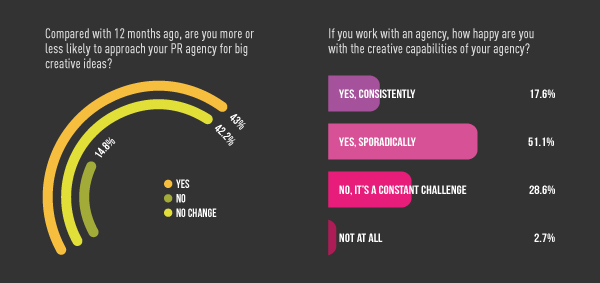
Once again, furthemore, PR agencies rank behind advertising and digital agencies when clients are asked to weigh them according to creative quality.
The client-agency divide also extends to overall perceptions of quality and ideas in the PR industry, demonstrating a less favourable view from those on the in-house side of the equation. Just 41% describe the industry's creative quality as inspirational or good, while almost 60% see it as ordinary or worse.
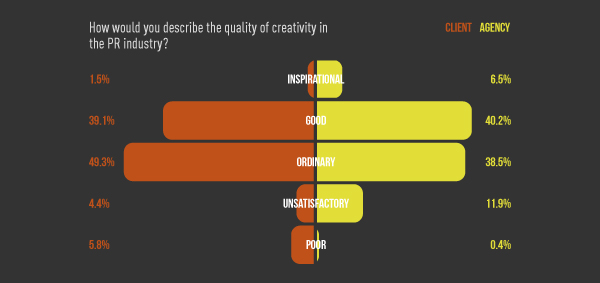
"The lines between above-the-line and below-the-line marketing seamlessly blur into each other more and more which means that PR agencies must step up their creative game or risk having other marketing disciplines grab the brass ring of idea generation," said MillerCoors chief communications officer Pete Marino. "If PR agencies want to become increasingly more impactful, the quality of their creativity will determine how far they can go.”
"This years report shows some progress around creativity. What it more clearly also shows us is that the ball is still firmly in our court," added H+K chief creative officer Simon Shaw. "It is only by combining our existing skills with new skills and we will be uniquely placed not only to be part of the creative agenda but lead the creative agenda."
Getting paid
This year’s survey again addresses one of the fundamental issues that affects creativity. How exactly should agencies be reimbursed for their ideas? This question was put to both clients and agency people, revealing a significant dichotomy between each side.
Clients clearly demonstrate more innovation here, preferring to pay set fees for ideas (32%) or based on sales results tied to ideas (32%). Both of these rank ahead of IP/licensing ideas (26%), with billable hours coming in last (24%).
Agencies, meanwhile, would rather stick to billable hours (48%) with slightly less also favouring set fees for ideas (44%). There is little agency appetite for IP/licensing ideas or via sales results tied to ideas.
The findings would appear to confirm that a more innovative approach to funding would help encourage idea development and overall creativity. As in previous years, it appears that agencies need to work harder to find common ground with clients that are searching for more creative PR work.
Other key findings that will be explored this week include:
- The tools, techniques and investment that are being used to support creativity
- The drivers of great PR work


































.jpg)



.tmb-135x100.jpg)









